#manuscript fragments
Text


Sometimes our #ManuscriptMonday posts are beautifully preserved specimens, and sometimes they're survivors that have persisted for centuries against all odds. This is one of the survivors.
After they outlived their usefulness, many medieval manuscripts were cut up and recycled into book covers, binding reinforcements, and even linings for clothing, shoes, and musical instruments. Parchment is durable, flexible, and expensive to produce, so it makes sense that people found ways to reuse it instead of merely throwing it away.
Reuse of Hebrew parchments like this one, however, can bear witness to both medieval recycling practices and religious persecution. This fragment is from tractate Menachot, part of the Talmud, which was subjected to confiscation, censorship, and public burnings in medieval Europe starting in the thirteenth century. We don't know whether this specific fragment was taken from its community by force, but many like it were.
Some medieval Hebrew texts are all but lost, known today only through surviving fragments. Read more about "The European Genizah" in a recent article by Simcha Emanuel in Tablet magazine.
Tractate Menachot, 33-34. Part of a very large 3-column manuscript of the Talmud, in Hebrew, Tractate Menachot, 33-34, Ashkenazi, presumably Germany, approximately thirteenth century, red stains. University of Missouri Digital Library.
#manuscript monday#manuscripts#medieval manuscripts#manuscript recycling#talmud manuscripts#hebrew manuscripts#manuscript fragments#fragmentology#mizzou#special collections#rare books#bookhistory#university of missouri#libraries#private collection#fb#kelli h
180 notes
·
View notes
Photo

"Was it a vision, or a waking dream?
Fled is that music? Do I wake or sleep?"
Manuscript of 'Ode to a Nightingale' by John Keats
#john keats#keats#ode to a nightingale#ode#poetry#poem#romantic poets#manuscript#handwriting#fragments#*
4K notes
·
View notes
Text
Hey I’m so sorry, but your boyfriend was on my papyrus last millenium and someone used it to stop a wine bottle. They’ve excavated some fragments but he was in a lacuna. I’m so sorry.
433 notes
·
View notes
Text
For this week's #CoffeeWithACodex (Thursday, April 11, 12pm Noon EST on Zoom), Curator Dot Porter be joined by guest host Louis Meiselman, Judaica Special Collections Cataloging Librarian. We'll be looking at CAJS Rar Ms 25, a collection of medieval leaves in Hebrew that have been used in bindings.
Register here:
34 notes
·
View notes
Text

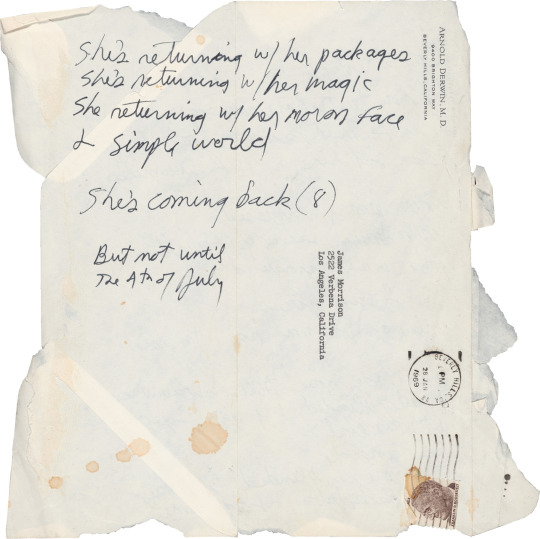
Jim Morrison, Unpublished Lyrics (The Collected Works)
#jim morrison#james douglas morrison#words#lyrics#writings#poems#poetry#poems and fragments#manuscript#the collected works#60s#classic rock#music#rock
73 notes
·
View notes
Text
Episode 8: Eric Johnson on manuscript fragments, Ohio, and the ethics of collecting
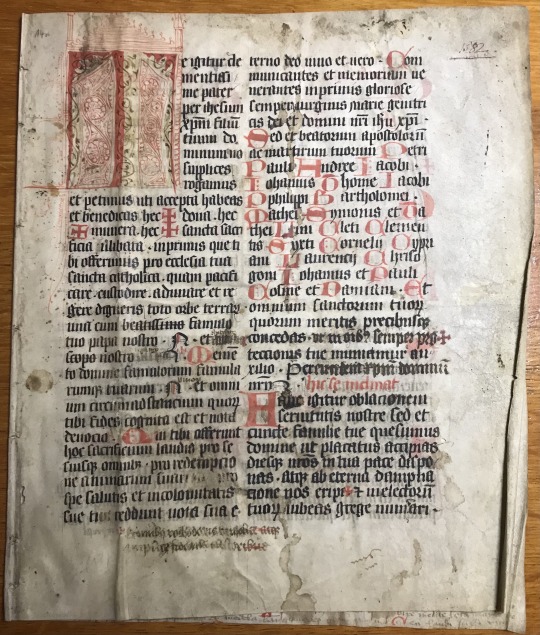
Folio 1r of a bifolium from a Missal, from the collection of Eric Johnson
In Episode 8 of Inside My Favorite Manuscript, Lindsey and Dot chat with Eric Johnson about two manuscript fragments from his own collection. We talk about the ethics of collecting fragments, Ohio’s place in the history of book breaking, and how manuscripts were used - both in their own time and through their afterlives.
Listen here, or wherever you find your podcasts.
Below the cut are more page images from the manuscript, and further reading.
The first fragment, from a Missal (book used for the Mass)

The Missal bifolium is two attached leaves, formed by taking a sheet of parchment and folding it in half down the middle. The front (recto) of the first leaf is on the right, and the back (verso) of the second leaf is on the left.

Here the bifolium is flipped over, so the verso of the first leaf is on the left and the recto of the second leaf is on the right.

Leaf 1 recto

Leaf 1 verso (little face drawn in the red Q at the top left column!)

Leaf 2 recto (with water stain)
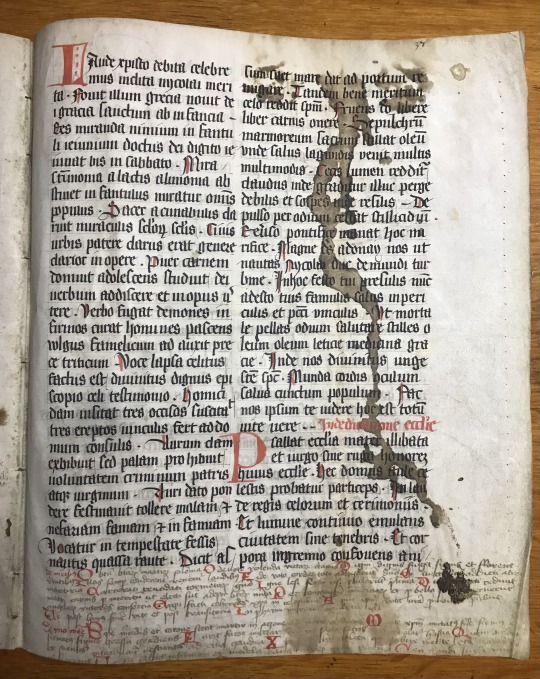
Leaf 2 verso (with water stain and floppy-eared pig-dog on the top right)
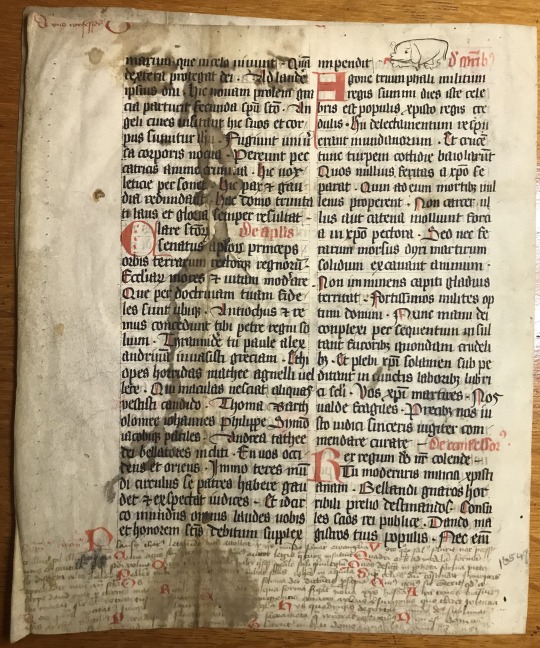
A close up of the floppy-eared pig-dog on Leaf 2 verso.

A close up of the little face in the red Q

And here is Eric holding up the second bifolium. It’s much smaller than the Missal fragment, from a manuscript that was designed to be carried around.

Leaf 1 recto on the right, Leaf 2 verso on the left

A slide that Eric put together pointing out all the various texts written on this bifolium. Even if you don’t know Latin or Paleography, you may be able to tell that a few different people wrote different sections of text.

Leaf 1 verso on the left, Leaf 2 recto on the right. On these two pages the different scribal hands may be more obvious (note the lighter areas on the top left of both pages)

And here are the texts identified.

Leaf 1 recto
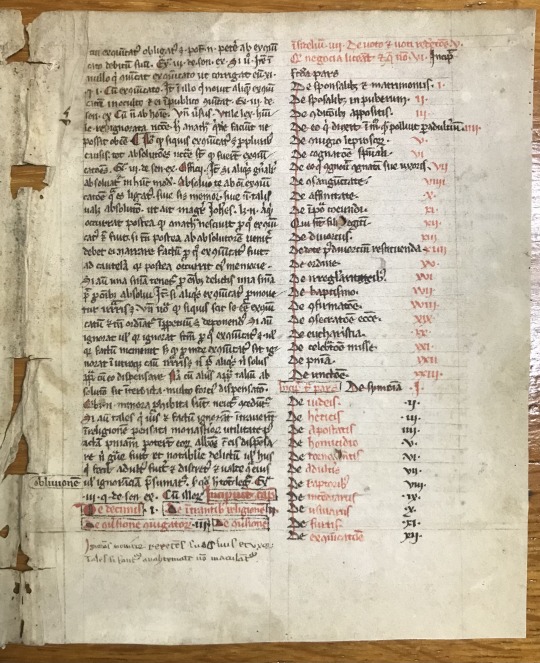
Leaf 1 verso
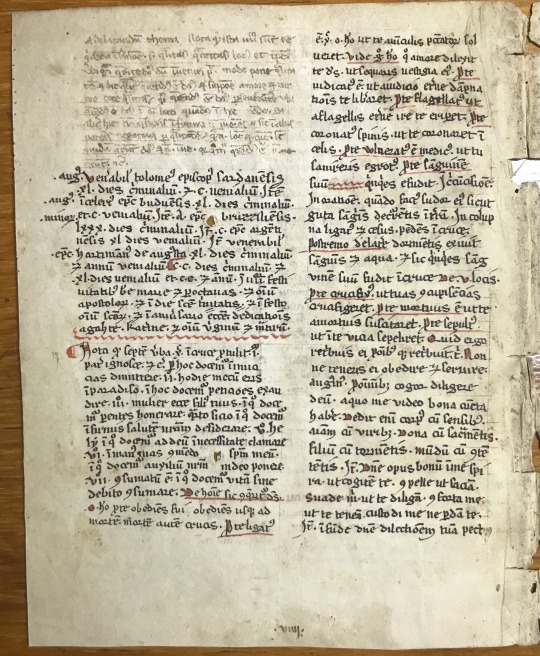
Leaf 2 recto

Leaf 2 verso
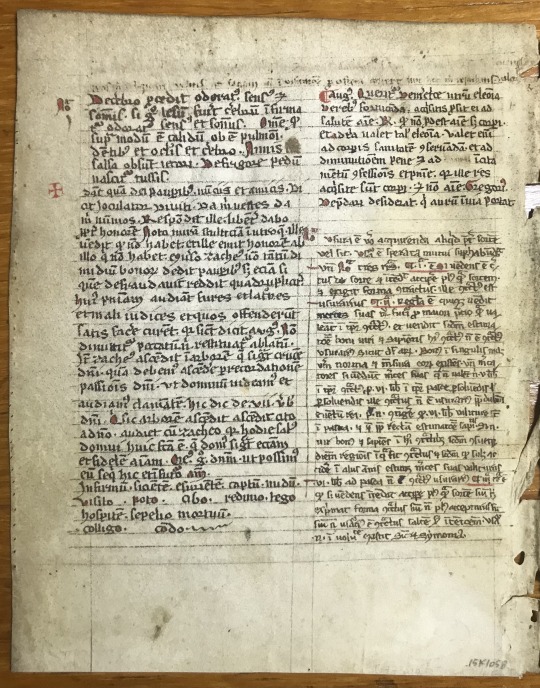
Some projects mentioned during our conversation:
Fragmentarium: Laboratory for Medieval Manuscript Fragments
Lisa Fagin Davis, Reconstructing the Beauvais Missal
6 notes
·
View notes
Text

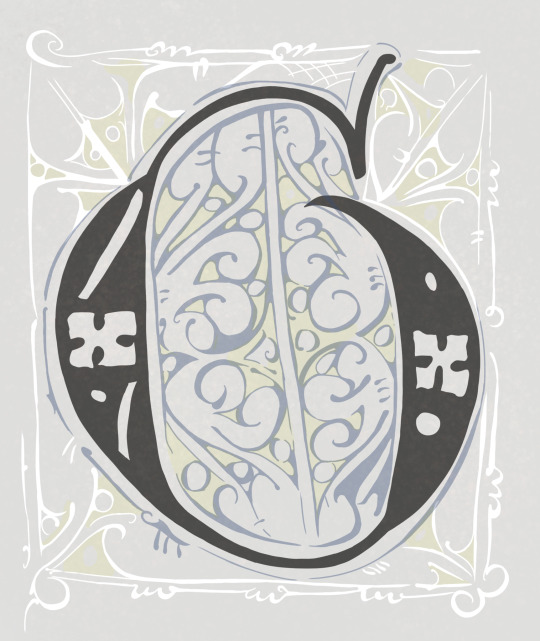
From Norwegian illuminated manuscript. The brown part is probably just faded blue but I made it brown just in case.
Original and alt colorway
Originally I noted which fragment this was from but the note has been lost and I don’t have the patience to look through the whole archive again.
Anyway shouts out to University of Bergen and their wonderful resource melod.uib.no <3
#illustration#norse#medieval#norwegian history#illuminated manuscript#middle ages#procreate#norway#gothic#caligraphy#fragment#archaeology#grimmborg#manuscript#manuscripts
18 notes
·
View notes
Note
So I write all sorts of things (fiction, fanfic, screenplays) and my mind is cluttered garden of flowers and weeds and shiny ideas, and I'm wondering how to form a writing practice to clear it into tidy rows? Is it possible to shepherd untamed ideas into order?
How do you manage all your wonderful worlds, characters and inspiration and not feel haunted by the story bits and pieces in your head? Any practical tips beyond dark magic?
Thank you, you are such a constant inspiration for me, both prose and just your presence. <3
*laugh* Oh god, Nonny, if I ever find out, I’ll tell you! When you read books, you’re getting the Instagram-filtered view of a writer’s brain, all the flowers that grew out of the compost heap, carefully composed and shot in optimal lighting. The real inside of my skull is a magpie nest of Neat Shit I Read/Saw/Thought Up While Lying Awake At 2 AM. There are characters and ideas in there that I’ve been trying to get into a manuscript since I was twelve and typing on an Amiga 500.
But, that said…really, I think it’s okay. Creativity is inherently untidy. The compost heap can be corralled into a very pretty box made of sustainably harvested materials, hand-stained by traditional artisans being paid a living wage by an employee-owned company, but as soon as you lift the lid, it’s all worms and coffee grounds and old potting soil and cow shit and the vegetables you swore you were gonna eat this time before they went bad. That’s what compost is.
Nevertheless, having been in the business for…uh…fifteen years now? (@dduane is snickering at me, I can feel it) and having written nearly forty books, I can offer three bits of something less than advice. It’s what I do. It may not work for anyone else, but it’s what I do.
Un-Advice The First: If you get a shiny idea and you are super excited by it? Go ahead and chase it. Pull up a new page in Word or whatever and slap down a couple thousand words while it’s exciting. I know that this absolutely flies in the face of common wisdom, but quite frankly, my enthusiasm is a much rarer commodity than my time, so if I’m excited about something, I write it down until I’ve taken the edge off.
Then I usually save it into a big folder called “Fragments” and go back to work on whatever I’ve got a deadline on. (Usually. Sometimes the edge doesn’t wear off, and I wind up with another book. Which, y’know, darn.)
There are vast numbers of people who will tell you that a shiny idea is a sign that something is wrong with your current project and the solution is to knuckle down and work! through! it! And those people are probably right for them, and I trust they know how their own brains work. Me, though, I got ADHD like a bat has wings. My hard drive is a vast swamp of story beginnings, neat ideas, random scenes. And that’s okay because I still get books finished.
In fact, it’s better than okay. Not that long ago, my agent sent a novella to a publisher and they said “We’ll take that novella and three more novels. What’ve you got?” And I ended up plundering my hard drive and sending the editor a good dozen random beginnings until we found one that we both liked, and then I wrote the rest of that book. And then another one. If I hadn’t had all those fragments lying around, though, it would have been a miserable experience of writing book pitches and trying to think of stuff I could get excited about. (This may not be how some editors work, but it’s how my editor and I work, anyhow.)
Un-Advice The Second: Trust that everything will find a home eventually.
This one is easy to say and hard to do because sometimes you get that overload that if you’re writing the book about, say, werebear nuns, you aren’t writing the one about the alien crustaceans. Or worse, you feel guilty. If you don’t use that one cool thing, was all that time you spent on it wasted?
Breathe. Be easy. Every single cool thing does not need to go into a single book. There is no sell-by date on the neat character. You will probably write many books in your life and all those random characters will find a home. (Seriously, the werebear nuns were lurking for like a decade.)
For me, at least, when I find the spot where something fits, it often snaps into place like a Lego. Easton’s backstory as a soldier from a society where soldiers were a third sex had been kicking around in my head for a few years, derived from about three different sources, and then I wrote the opening to What Moves The Dead and all of a sudden Easton was there and alive and they had strong opinions about everything and I had ten thousand words practically before I turned around.
You can also stave off guilt by writing some of your ideas in as highly personal Easter Eggs. A couple of my books have references to a white deer woman, a heroic deed done by a saint and the ghost of a bird, and a woman with dozens of hummingbirds on tiny jeweled leashes. Those are all characters and stories I’ve had vague notions about, but haven’t managed to work in anywhere or learn much more about. Still, the passing reference is enough to make me feel like I haven’t abandoned them.
(The advantage to this is that once you DO write those in, the readers are all “oh my god, she foreshadowed this a decade ago, she must have planned this all out in advance!” Then you look really clever and well-organized and no one has to know that you have no idea what you’re doing.)
Un-Advice The Third: Write the kitchen sink book.
At one point, I had so many stray ideas that hadn’t gotten into a book yet—the tree of frogs, the dog-soldiers, the stained glass saint, the albatross and the shadow of the sun, and also I wanted to write something with Baba Yaga—that I hauled off and wrote a book where I just put in everything and the kitchen sink. It’s called Summer in Orcus. There are bits in there that I had been cooking in the mental compost heap for decades, but that weren’t enough on their own to sustain a whole book. The phrase “antelope women are not to be trusted” showed up in my head some time in college. It’s a fun little book and I’m proud of it, but it’s very much a patchwork quilt of weirdness. But it’s also written so that if later on, an antelope woman shows up in another book in another context, that just adds to their mythology, it doesn’t break canon or whatever.
(Pretty sure I’m not the only one who has done this, either. China Mieville has said that he wrote Perdido Street Station because what he really enjoyed was writing all the weird monsters.)
So yeah, that’s my advice, for what it’s worth. Some days I just tell all the fragments and ideas that I promise that I’ll get them a home eventually but I need to write this thing here now. Sometimes I throw down enough words to get the story stabilized and then I’m okay to move on. Sometimes I write multiple books simultaneously.
Any method you use to write the book, so long as it doesn’t hurt you or anyone else, is a perfectly valid method. If anyone tells you different, you send them to me.
(…god, I hope that was the question you were actually asking, Nonny, and that I didn’t go off on a completely different tangent when you just wanted to know how I keep track of a plot or something.)
5K notes
·
View notes
Text

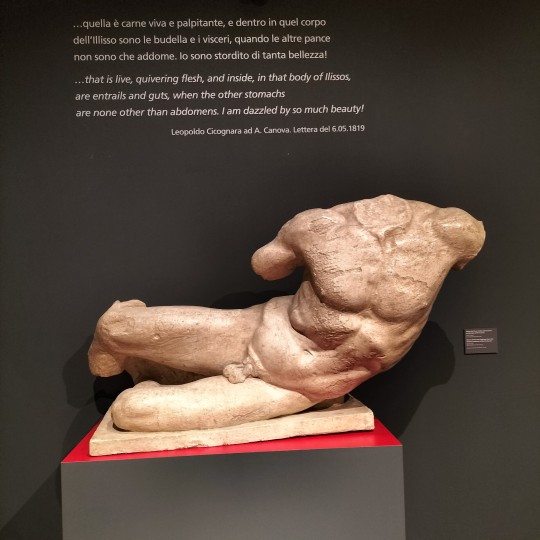



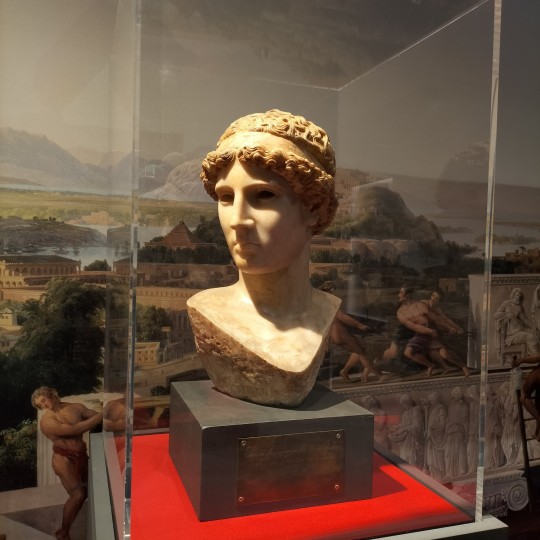
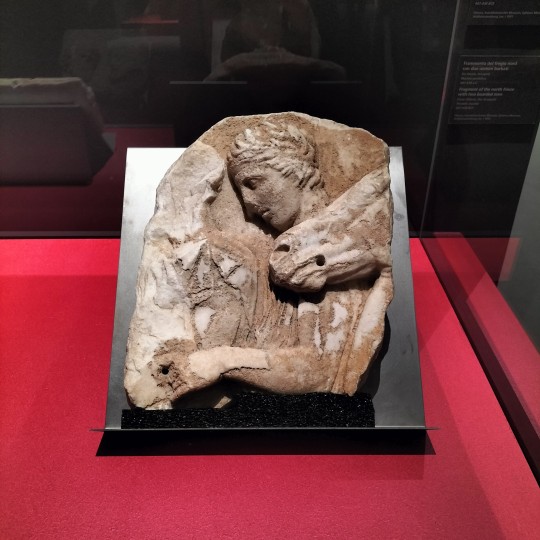

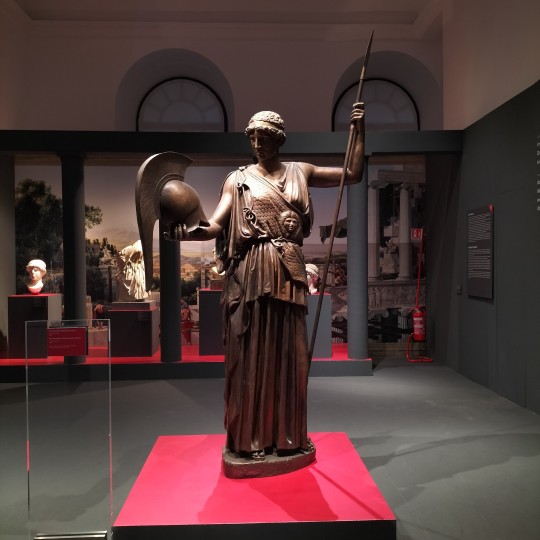

from november 2023 to may 2024 at villa caffarelli, part of the capitoline museums, an exhibit entirely dedicated to phidias, the famous sculptor behind the parthenon and the chrysoelephantine colossi of the athena parthenos and zeus of olympia.
the exhibit is composed of a selection of more than 100 works, from archaeological finds to paintings and manuscripts narrating the life and work of the artisan, with the support of reconstructions, multimedia installations and digital content.
the exhibition is the first of a series of five exhibitions, "i grandi maestri della grecia antica". in addition with the artworks coming from museums in rome and other italian institutions, the exhibit contains some extraordinary loans, items that have never left their museum premises, as for example two fragments from the parthenon frieze, from the acropolis museum in athens.
tiktok
#paiawon.txt#tagamemnon#phidias#archaeoblr#archaeology#art history#rome#capitoline museums#musei capitolini#athens#athena parthenos#zeus of olympia#parthenon#greek archaeology
503 notes
·
View notes
Text
The missing Arthurian knight - rediscovered in 2019
Well the title is a slight lie - the missing knight wasn't rediscovered in 2019, it was earlier than that, but he didn't became public until 2019.
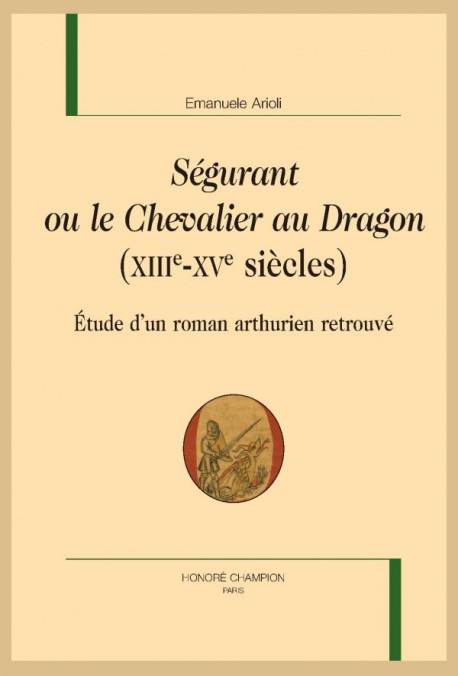
So what's this "missing knight" about? Well as the title says. There was a knight part of the Arthurian myth, and he had been missing ever since the Middle-Ages, and he was only recently rediscovered.
Or rather, to be exact - there was an Arthurian novel centered around a knight that existed and was a famous and well-known part of the Arthurian literature in the Middle-Ages, but that completely disappeared, and was forgotten by culture (as much popular culture as the scholarly one). Until very recently.
This rediscovered novel has been a hot topic of all Arthuriana fans in Europe for a few years now - and yet I do not see much talk about this onto this website, despite Tumblr being a big place for Arthurian fans?
So I will correct this by doing a series of posts about the subject. And this post will be the first one, the introduction post presenting to you "Ségurant, le chevalier au dragon" ; "Segurant, the knight of the dragon". A French medieval novel part of the Arthurian literature (hence the "chevalier au X" title structure - like Lancelot, the knight of the cart or Yvain the knight of the lion from Chrétien de Troyes), the reason this story was forgotten by all medievalist and literary scholars is - long story short - because it never existed in any full manuscript (at least none that survived to this day). It was a complete story yes, with even variations apparently, but that was cut into pieces and fragments inserted into various other manuscripts and texts (most notably various "Merlin's Prophecies").
The novel and the Knight of the Dragon were rediscovered through the work of Emanuele Arioli, who rediscovered a fragment of the story while looking at an old manuscript of a Merlin Prophecies, and then went on the hunt for the other fragments and pieces scattered around Europe, until he finally could compile the full story, that he then published in 2019, at the Belles Lettres publishing house, in 2019.
Arioli reconstructed the text, and translated it in both modern French and Italian for scholarly and professional editions (aka Honoré Champion in France, a reference for universities)...
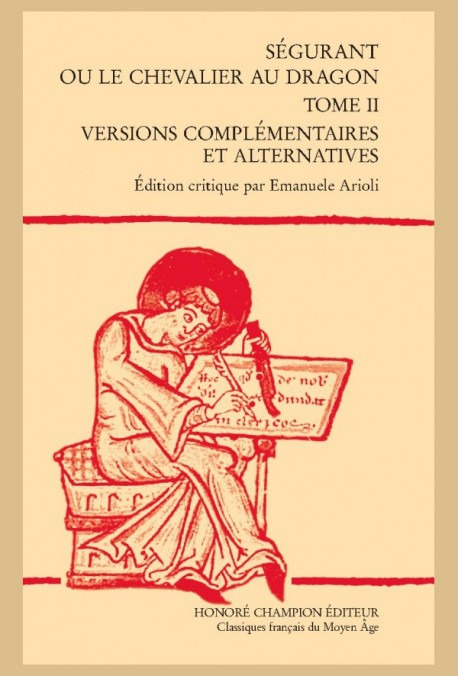
... But also for a more "all public, found in all libraries" edition - the famous 2019 edition at Les Belles Lettres.

And not only that, but he also participated to both a comic book adaptation with Emiliano Tanzillo...
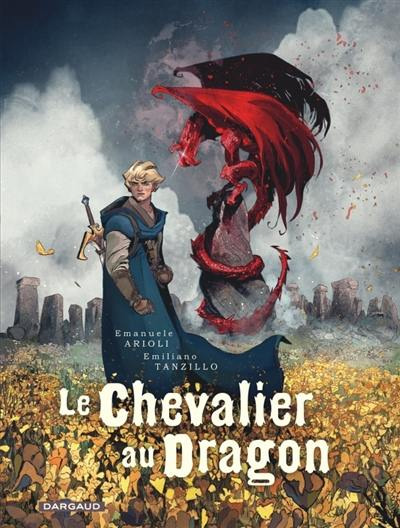
... and an adaptation as an illustrated children novel!

Finally, just a few weeks, the Franco-German channel Arte released a documentary about the reconstitution and content of this missing novel called "Le Chevalier au dragon: Le roman disparu de la Table Ronde". (The Knight of the Dragon - The missing novel of the Round Table). The full documentary is on Youtube in French for those that speak the language, here. And in German here for those who speak German.
Unfortunately there is no English version of the documentary that I know of, nor any English publications of the actual text - just French and Italian. But hey, I'll try to palliate to that by doing some English-speaking posts about this whole business!

#ségurant#segurant#the knight of the dragon#le chevalier au dragon#arthuriana#arthurian myth#arthurian literature#arthurian novel#discoveries#medieval literature#arthurian legend#arthurian knights#found media#lost media#that people didn't even know was lost
308 notes
·
View notes
Note
why a coded gynaecology textbook?
The angle I've found most convincing is that the text is written in a coded form of medical shorthand, so even direct decoding only produces inconsistent fragments of words that 15th century doctors would have been able to read.
The strange illustrations of women bathing in large flowers are coded instructions for the production of medicated baths, a common treatment for gynocological ailments.
(this is just one of the many theories around the voynich manuscript, it's far from settled)
307 notes
·
View notes
Text
I don't think enough people realise that the Renaissance was the original atavistic, ultra conservative cultural movement...which not only unwound centuries of medieval progress but destroyed thousands of medieval books.
I'll never, ever forget the anecdote I heard about a renaissance scholar of Aristotle who was shown by a surgeon that the nerves of the body ran to the brain. "Amazing!" the scholar said. "If it wasn't for Aristotle saying that the nerves run to the heart, I'd be absolutely convinced!"
All the gross, stupid stuff people have been blaming on the middle ages, like not bathing and burning witches? LITERALLY RENAISSANCE INNOVATIONS. (Even the Black Death happened right at the end of the medieval period - in fact marked its ending.)
The main reason why the Renaissance was SO BAD and resulted in the destruction and loss of SO MUCH medieval knowledge, is that scholars literally decided that the older knowledge was, the better and purer it was. They cannibalised medieval books to bind their own books. There are literally people whose job it is to find and restore fragments of priceless medieval manuscripts from the covers of reprints of Aristotle.
For 1,000 medieval years natural philosophers, engineers, surgeons, and more had painstakingly noted where Galen and Aristotle were wrong. They learned about anatomy and physics and applied it to technology. The Renaissance ditched all that because they were the original RETVRN bros.
And it's the Renaissance that gets remembered as the golden age. It wasn't.
(For those wanting citations or further reading - James Hannam's God's Philosophers has a lot of the receipts, but seriously you just have to look at the dates. Witch burnings became commonplace after the Malleus Malleficiarum was published - in 1486!!! Well into the Renaissance!)
356 notes
·
View notes
Text
ETA Hoffman's Tomcat Murr and Noé Archiviste: A Tale of References Referencing References


(A sculpture of German writer ETA Hoffman (1776-1822) and his cat Murr in Bamberg, Germany that inspired the creation of Noé Archiviste and Murr in The Case Study of Vanitas by Jun Mochizuki.)
So, this is a long post with a lot of quotes. The idea is that Mochijun took the general structure for the manga from this obscure text by otherwise well known writer ETA Hoffman. The pictures speak for themselves, but the introduction to the text recalls a lot of VnC's themes.
This is the text im using: The Life and Opinions of the Tomcat Murr (1820). (link to Anna's Archive).
From Fantasy and Science Fiction:
This complex, truly wild fiction, created in the mid-1800's, is the autobiography of the tomcat Murr, written on the backs of the pages of a manuscript he has clawed to pieces. Interspersed with Murr's musings is the biography of Kappelmester, Johannes Kreisler, Murr's owner.
Kreisler was the pseudonym under which ETA Hoffmann published his brilliant critical essays on music, and Murr was the real name of his cat. Through these two entities, he pieced together the fragments of his own shattered psyche and commented on the relationship of art and artists to society
And now I am simply going to cherry-pick some quotes from the book's introduction. I wanted to write a long essay on them, but that is simply not happening any time soon. VnC fandom theorists - knock yourselves out:
On Plagirism and References:
“Murr’s wilful destruction of Kreisler’s book, by which his work becomes a palimpsest, signals the novel’s fascination with reflections and plagiarism. This is also evident in the innumerable quotations from Goethe, Shakespeare, Mozart and many others.
Literature arises through a dialogue with earlier art, being both imitation and aesthetic cannibalism.
On the protagonists:
“The protagonists prove to be opposites, too, Murr (Noé-ish) being the lovable cat, a calm, integrated, vain, self-satisfied and confident bourgeois who enjoys an unproblematic relation to his comrades and the opposite sex. (Alright the opposite sex bit barely applies sexually or romantically, but there is an air of innocence that is familiar.).
Kreisler (Vanitas-like) by contrast, is the neurasthenic, anguished genius, unable to find a niche in society or to satisfy his desires; an artist whose wildly pendular moods swing between radical extremes, from the plainly ridiculous to the loftily sublime.”
On The Shapelss One and Marquis Machina On Master Abraham:
“The novel’s two halves are linked by Master Abraham, Murr’s owner and Kreisler’s mentor."
“The mysterious, Faust-like magus Master Abraham is closely associated with his machines and curiosities, like his ‘marine trumpet’.
On Noé Murr:
"As in a human Bildungsroman, the story relates how the cat repeatedly succumbs to delusion and reawakens to higher knowledge. "
On Humanity:
“Personality seems unstable. The self seems liable to split and confront its doppelgänger, being at the mercy of strange outer forces or inner impulses.
Thus the plot demonstrates the intricate but fragile bond that unifies the human family, a family which seems to be acting out its fate as mechanically as one of Master Abraham’s gadgets.”
On Time and Chronology (and Time Loops).
(small explanation- these are two narratives in one. Murr's is linear, while Kreisler is out of order and circular, which is what these quotes are referencing).
“The structure of the novel plays fickle games with time. The Murr action lasts only a few months and occurs chronologically in the interval between the first and last Kreisler chapters.
Chronologically, the first Kreisler fragment in the novel actually follows the last: at the end, Master Abraham invites Kreisler to the celebrations he describes at the beginning.
(Like come on the end being the start is literally the first chapter of the manga.)
“Linear time belongs to rationality and cannot encompass the ultimate truths the novel seeks to convey"
“The Kreisler narrative is thus entrapped in circularity.”
“When we eventually discover the Kreisler story’s reverse chronology, we ourselves begin to enter time’s infinite loop, approaching the absolute to which Kreisler aspires, where past, present and future merge as one.”
note: if Vanitas (circular time) is a stand-in for Kreisler, Noé (chronologically) for Murr and Abraham (The Shapeless One) tying it all together well...... interesting. Personally I think the references could point to Noé being an unreliable narrator who describes a circular, winding, unstable narrative. He currently speaks with an authority that seems to radiate objectivity and detachment, marked by the scientific sounding main title The Case Study of Vanitas, but the reality of his subjective emotions is given away in the secondary title The Memoires of Vanitas, which is, in itself, an example of a reference to the dual autobiographies in Kreisler's novel.
(Also a theory floating around (not mine) that this "Vanitas" refers to Noé himself after turning into a Blue Moon vampire. I quite like this theory. Or Vanitas lives. Or he writes part of the book before he dies, like Murr did)
On Tone:
“ Humour and irony themselves engage in a dialectic. Irony – the novel’s constant weapon – exposes the negative.
Humour reveals the positive, and entails the acceptance of, and thereby the elevation above, negativity.
On Magic and Worldbuilding (or Babel in Vnc)
“The spiritual realm beyond appearances frequently makes itself felt among the characters. Dreams, strange affinities, correspondences, animal magnetism and electric shocks all point to the existence of an arcane region, beyond empirical fact.
On the Tragic Ending:
Hoffman's cat died before he completed the second volume, and the he died before he completed the third volume. His protagonist was supposed to have a happy ending - but there was no ending instead
“Ironically, Murr’s death means that his well-planned book will remain a fragment. His papers will instead be inserted into the hitherto fragmentary Kreisler tale. In a further irony, it now seems that the Kreisler story is destined for completion.” but wasn't because the author died.
Now I did my job. Go forth and theorize! (and tag me please! I wasted valuable grad school time to write this!)
#the fact that Noé is (probably) modeled after this sculpture is sending meeee#its so cute!!#vnc references#vnc#vanitas no carte#the case study of vanitas#noe archiviste#eta hoffman
70 notes
·
View notes
Note
During ancient times there was the kingdoms of Judah and Israel. But according to the Tanakh (Hebrew Bible) there was also the United Kingdom of Israel. BUT the thing is that a lot of ancient history about Jews is written in the Tanakh. And you can never really 100% trust religious books as historical sources. The Tanakh was written on stuff that can actually be preserved. While possible other sources on history of the Jews and other groups were written on things that perished. There is a lot of debate about the extent of the United Kingdom of Israel or that it even existed.
You have two kinds of historians when it comes to the Hebrew Bible:
The maximalists: accept everything unless proven incorrect by outside sources. https://en.wikipedia.org/wiki/Biblical_maximalism
The minimalists: Hebrew Bible is limited in historical value. https://en.wikipedia.org/wiki/Biblical_minimalism
Thanks so much for these links actually while looking at "biblical minimalism" I recognize some of the authors being cited in some of the works I read. I should check them out.
Also love reading academic beef the way that both groups named each other's "study" but neither operates with those labels lmaooo classic academics.
But also so people don't misunderstand me or try to take me out of context regarding this whole discussion: I also don't think the Quran is a 100% accurate historically, and it's stories are mostly used to educate on certain topics and ideas as it's primary purpose (think of aesop fables when i say this). Of course religiously I believe in the Quran, but most of the Quran is written in poetic verses in arabic and even as a baseline Muslims believe there's more to a quranic translation than just the direct translation. In quranic book history what we focus on a lot is the way books were made throughout history moreso than the actual contents (which religiously, we are not supposed to change at all... I believe the Hebrew Bible also is like that? Would love if someone could tell me more about it tho).
Even with the Birmingham Quran (the oldest quran that has been carbondated to around the time of Prophet Muhammad), i dont think its as important for the text itself (other than comparing contemporary and ancient to see if any changes happened through the few leaflets that survived), the most valuable parts of it is the fact we can carbon date it and see what sorts of materials they used back then and to see when the earliest surviving fragments came from. Plus we can analyze the script and rubrication to see if this was actually used to be read or used as a mnemonic device.
I can't say too much about archeological study more than this and that other post though. That's not exactly my field of interest or expertise. If people want to share more I can't provide much input unless you're talking about book history LOL.
But yeah just wanted to clarify so people don't assume bad faith/try to use my words to push their own agendas. In general historical studies should separate themselves from religion I feel if they go beyond analyzing societies the time in which the books/material were made or written.
Also here's a direct link to Birmingham Quran if the above one doesn't link:
54 notes
·
View notes
Text
For #CoffeeWithACodex on April 11, Curator Dot Porter was joined by guest host Louis Meiselman, Judaica Special Collections Cataloging Librarian. We looked at CAJS Rar Ms 25, a collection of medieval leaves in Hebrew that have been used in bindings.
Watch the full 30-minute recording on YouTube:
#cwac#hebrew#manuscript#medieval#medieval manuscript#fragments#binding#binding fragments#binding waste#video#event#13th century#14th century#book history#rare books
39 notes
·
View notes
Text

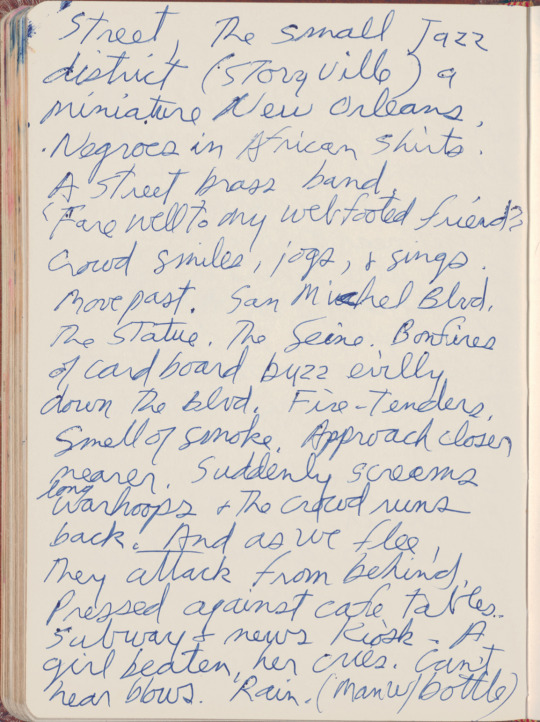
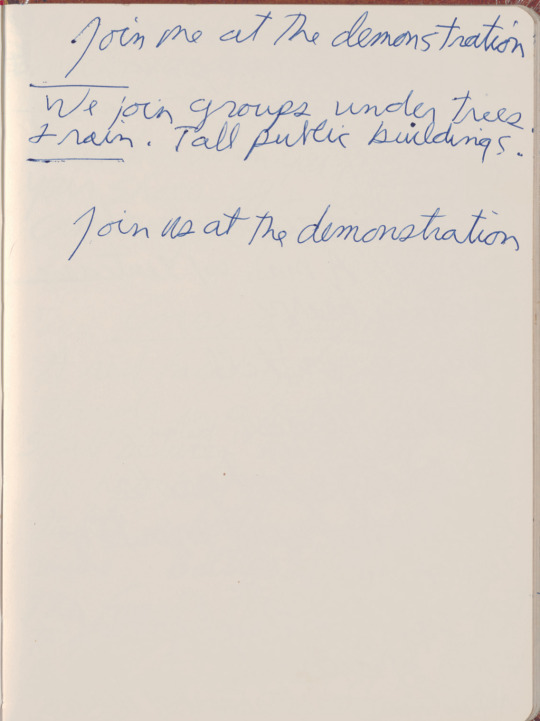
Jim Morrison, The Sidewalkers (manuscript) from “Notebook and Journal Poems” (The Collected Works)
#jim morrison#james douglas morrison#writings#the sidewalkers#poems#poem#poetry#manuscript#fragments#words#poems and words#60s#beat generation#beat poetry
28 notes
·
View notes